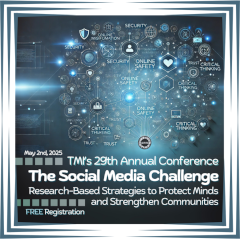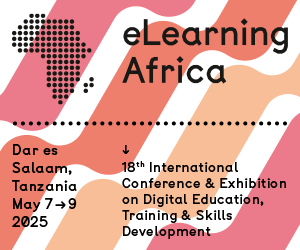"We Still Have a Lot to Learn"
 Karlsruhe/Leverkusen (GER), November 2011 - How useful are Web 2.0 applications for companies? When does an individual employee benefit? Ellen Trude, an expert on social media training and competence development at Bayer Business Service, will address these questions in her presentation at the LEARNTEC Conference. Her topic is entitled "Enterprise 2.0 - More than Wikis and Blogs". Trude has developed courses that introduce Bayer employees to network-based forms of collaborative work.
Karlsruhe/Leverkusen (GER), November 2011 - How useful are Web 2.0 applications for companies? When does an individual employee benefit? Ellen Trude, an expert on social media training and competence development at Bayer Business Service, will address these questions in her presentation at the LEARNTEC Conference. Her topic is entitled "Enterprise 2.0 - More than Wikis and Blogs". Trude has developed courses that introduce Bayer employees to network-based forms of collaborative work.
What is hidden behind the title of your lecture?
EllenTrude: The viewpoint regarding Web 2.0 applications and social media is still frequently quite restricted. Most people think of Wikis and Blogs, but simply setting up a Wiki is not enough to assure the success of a project. It also doesn't make sense for CEOs to maintain a blog if they don't have anything of importance to say. You always have to ask yourself what a tool can actually do and, first and foremost, what the ultimate goal is - from both the firm's and the employees' point of view. So instead of starting a wiki for a project, a real-time environment or micro-blogging might make a lot more sense.
For many people social media is synonymous with Facebook and Twitter. How can the first experience with social media be restructured and extended for corporate needs?
EllenTrude: If someone were to tell me in all seriousness that she or he hardly ever writes private emails anymore because all communication is done via Facebook, I would say not much has been gained: The only thing that's changed is the way the communication is conveyed. Enterprise 2.0 means combining knowledge management with the desire and the possibilities to share knowledge. This produces something positive for the firm. If I'm working on something, and I make a posting about it that a colleague - who might be here in Germany or in Asia - sees and sends me a message that helps me, for me that's what Enterprise 2.0 is all about.
What does this mean from the viewpoint of an experienced education-and-training expert?
EllenTrude: That competences must change and be broadened. It was basically also true in the past that a great deal of knowledge was available in companies, but whoever wanted to access it did not necessarily know where it was. Searching with the tools that existed at the time was complicated and time consuming. This is where social media can add genuine value. But for this to happen, we have to learn a lot, such as, for example, correct tagging so we find the relevant experts in the company, or how to use RSS appropriately. In any case, we have to be able to evaluate the tools that can best help us for our specific task.
Isn't there also a generation gap within the staff?
EllenTrude: There's a lot of talk about digital natives, but this only means a generation that has it a bit easier when dealing with smartphones and computers. It does not necessarily mean that better results are achieved or that true corporate networking takes place. And unfortunately, schools and universities have not done enough to promote the ability to exchange and share knowledge, and this is why I think that employees are all pretty much at stage one when it comes to new forms of collaboration in companies.
What is the benefit when Enterprise 2.0 is actually put into practice?
EllenTrude: There are many advantages, both for the individual and for the firm. Employees do their assignments faster, and because there is an exchange of ideas, results are more stable and mistakes can be avoided. Employees feel they're part of a community, which provides a real motivation boost.
The enterprise, in turn, benefits because duplicate tasks are avoided, saving time and money. You only need to think of the hierarchical principle behind sending information via email over numerous levels, from above to below. First of all, it takes a long time, and it's also expensive. And if the email has an attachment, our servers are unnecessarily burdened by the amounts of data that result from forwarding and copying. Thanks to 2.0 tools and social media, today there are more efficient and faster ways to share knowledge across hierarchies. They demand, however, new approaches and greater media competence.
What do you do to demonstrate the advantages of Enterprise 2.0 to employees?
EllenTrude: There is a training program called "Enjoy Social Media". It comprises various modules and begins with a virtual initial session in which the participants, who don't know each other, introduce themselves. They then get concrete tasks for which they have to use the Internet; for example, they have to find out how events in the social web can be observed in real time. Or they should attempt to register in a social network and to communicate with each other. Experiencing communication in real time and being able to reflect on all this all in a personal blog are often a completely new experience. But the participants are not left on their own; they have two learning companions at their side as contacts. The difference between this and face-to-face training is that the whole group gives feedback, sends tips, and offers comments. This combines the experience of a community and practical application experience in one.
How do people catch up? Some obviously are more familiar with the tools than others.
EllenTrude: Before beginning, all the participants do a self-assessment that provides themselves and us with important information regarding prior knowledge about social media and whether they already have specific competences.
But we also have two more online event series. The shorter one is called "Brief and Compact". It only lasts an hour and is more like a lecture in which the listener finds out in concise terms essential information, for example, about social networks or micro-blogging.
Our three-hour program "How to" goes further. Before it starts, desires, requirements, and problems are gathered on a wiki page. Depending on what's written, the trainers can prepare themselves and send the participants into the social web with targeted exercises. By the end, participants know the criteria used to select the appropriate tool for the task and the rules to be taken into consideration when, for example, presenting themselves and getting involved in internal or external social networks.
Our goal is not only to extend competences, but to enable the employees in particular to meaningfully and beneficially employ the advantages and strengths of the Web 2.0 tools that are right for them in their daily tasks.










